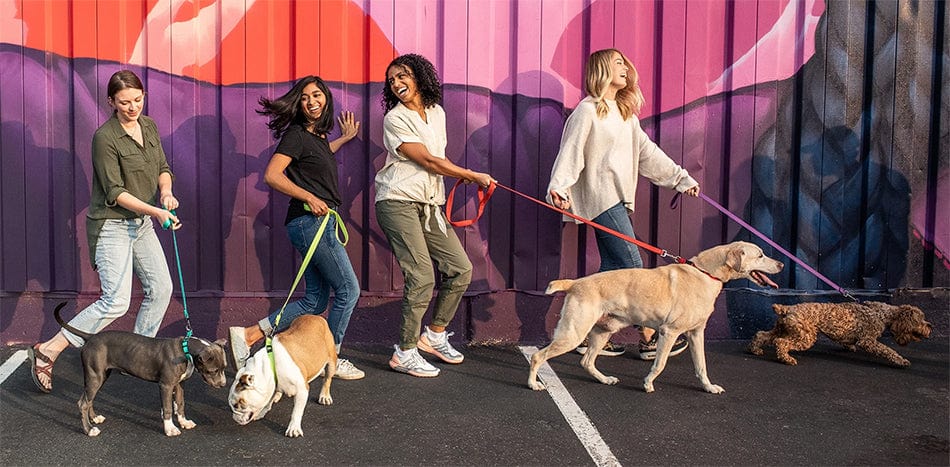Let’s face it: not all dog behavior is good behavior. From barking to lunging, and every icky thing in between, leash reactivity in dogs is a common growing pain for pets and owners alike.
That’s why this week, we’re getting down to the brass tacks of what leash reactivity is and how to handle it, so that you and your furry BFF can get back to what you do best: snuggling!
What is Leash Reactivity?
Leash reactivity is when a dog reacts in an unwanted manner toward a given stimulus (ex. other dogs, cars, people, loud noises) when on a leash. The most common leash reactive behaviors include:
- Barking
- Growling
- Lunging
- Biting/nipping
- Whining
Leash reactivity is isolated and refers only to behaviors exhibited when the dog is on a leash.
Because the behaviors aren’t consistent, unexpected episodes of leash reactivity can often leave a pet parent feeling embarrassed, ill-equipped and out of control.
Leash Reactivity Corrective Training
Don’t get too down in the dumps if you find yourself with a leash reactive dog. Here are some simple leash reactivity training steps, that owners can take to mitigate bad behavior:
Determine the cause of the behavior
-
Frustration - As dogs grow bigger, owners tend to restrict socialization. This can result in reactive behaviors that are rooted in frustration from wanting to say hello.
-
Fear - Dogs that have been poorly socialized or have had a bad experience with another dog can become reactive out of fear. Their behaviors may stem from being on a leash and losing their ability to choose “flight” in negative situations.
-
Conflict-Seeking - While it’s not as common, some dogs have a “try me” attitude that’s rooted in insecurity. This attitude seeks conflict, can be dangerous, and often requires professional help ASAP.
Prevent leash reactive behaviors
- Don’t let your dog meet other dogs while on a leash.
-
Avoid retractable leashes - keeping dogs within a few inches of you is always best.
- Avoid corrective collars - studies show that reactive behaviors can develop from receiving corrections in the presence of other dogs.
Practice on leash indoors
- Begin by associating a word like “yes” with positive behavior.
- Practice being on a leash indoors and holding up toys or other objects that can mimic outdoor stimuli.
-
When your dog recognizes or makes eye contact with the object, reward them with a “yes” and a treat, teaching them that a calm positive reaction to stimuli = a happy owner and a yummy snack.
Take the training outdoors
- When you see a trigger or stimuli approaching, keep a good amount of distance.
- When your dog notices the stimuli reward them with the familiar “yes” and a treat.
- If your dog ignores you or negatively reacts, back further away from the stimuli and try again.
- Repeat this pattern standing stationary for a few weeks until your dog begins to seek your approval and treat all on their own.
-
Once you feel confident, start the process while passing stimuli on a walk or hike.
Know when to call in a professional
If, after a few months of taking these steps, your furry friend is still exhibiting signs of leash reactivity, it may be time to call in a professional. Most importantly: if a dog makes you or someone else feel like they’re in danger, we encourage you to seek help from a trainer ASAP.
Conclusion
By pinpointing the underlying reason for leash reactivity, and using reactive dog training to prevent it in the future, pet parents can take leash reactivity frustration and turn it into a positive experience.
We hope this how-to guide has helped to instill leash-training confidence in all of our pet owner friends. And remember: a satiated dog is a happy dog so don’t forget the treats!

